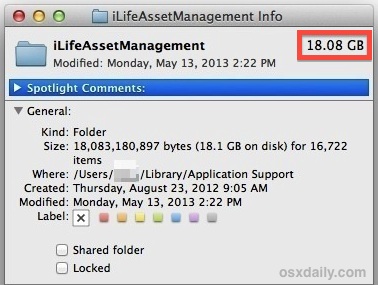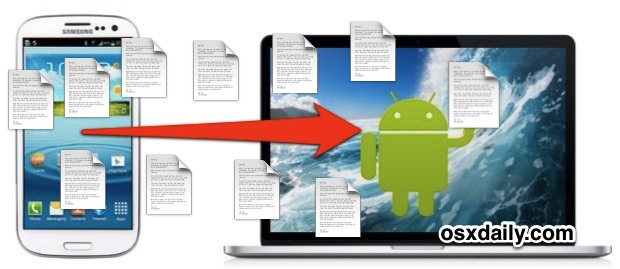Control What Apps Have Access to Contacts Information in iOS
![]() Have you ever noticed how some apps will have information pulled from your iOS Contacts list, like peoples names, numbers, and contact information? Or, contrarily, how some apps should have access to your address book, but don’t, and are then feature limited? Though this happens by choice, it’s fairly easy to overlook these settings during initial setup of many apps, or to forget which of the “Allow” or “Don’t Allow” setting you chose. Fortunately, this is very easy to see, and change in either direction.
Have you ever noticed how some apps will have information pulled from your iOS Contacts list, like peoples names, numbers, and contact information? Or, contrarily, how some apps should have access to your address book, but don’t, and are then feature limited? Though this happens by choice, it’s fairly easy to overlook these settings during initial setup of many apps, or to forget which of the “Allow” or “Don’t Allow” setting you chose. Fortunately, this is very easy to see, and change in either direction.
Read more »


 Use Mail app in Mac OS X to handle your email? Then this collection of some of the best tips you’ll find for Mail app in OS X is for you. We’ll cover some of the greatest tricks out there, including how to get new mail faster, see more messages at once, send attachments faster, trashing spam automatically, using VIP, previewing websites without opening them, speeding up mail app, and even a great trick to remotely sleep a Mac with an email sent from your iPhone.
Use Mail app in Mac OS X to handle your email? Then this collection of some of the best tips you’ll find for Mail app in OS X is for you. We’ll cover some of the greatest tricks out there, including how to get new mail faster, see more messages at once, send attachments faster, trashing spam automatically, using VIP, previewing websites without opening them, speeding up mail app, and even a great trick to remotely sleep a Mac with an email sent from your iPhone. 

 Can’t decide whether to have pizza or thai for dinner, but you’re all out of coins to flip and make the decision for you? Or maybe you can’t play Yahtzee or Bunco because you lost your dice? No big deal if you have an iPhone or iPad laying around, because Siri can both roll dice and flip coins for you.
Can’t decide whether to have pizza or thai for dinner, but you’re all out of coins to flip and make the decision for you? Or maybe you can’t play Yahtzee or Bunco because you lost your dice? No big deal if you have an iPhone or iPad laying around, because Siri can both roll dice and flip coins for you. Printing wirelessly from an iPad, iPhone, or iPod touch to a printer is very simple, particularly if the printer in question is AirPrint compatible. Essentially AirPrint means the printer has native wireless support for direct-from-iOS printing, and setup is an absolute breeze.
Printing wirelessly from an iPad, iPhone, or iPod touch to a printer is very simple, particularly if the printer in question is AirPrint compatible. Essentially AirPrint means the printer has native wireless support for direct-from-iOS printing, and setup is an absolute breeze. If you need to create an encrypted PDF with password protection, forget about buying Adobe Acrobat or other expensive software, because Mac OS X has you covered with built-in tools. Yes, the Mac can natively create secure password protected PDF documents, meaning it’s free, and it’s also impressively easy to do.
If you need to create an encrypted PDF with password protection, forget about buying Adobe Acrobat or other expensive software, because Mac OS X has you covered with built-in tools. Yes, the Mac can natively create secure password protected PDF documents, meaning it’s free, and it’s also impressively easy to do.
 Want to save that great video someone emailed you, so that you can access it anytime locally on your iPhone, iPad, or iPod touch? You can, but as many users notice, saving video to iOS device is a bit different than
Want to save that great video someone emailed you, so that you can access it anytime locally on your iPhone, iPad, or iPod touch? You can, but as many users notice, saving video to iOS device is a bit different than  While Photo Stream is a great feature of iCloud, if you self manage your iPhone photos, it can quickly end up eating tons of disk space on a Mac hard drive. How, might a reasonable individual ask? Well, it may be unintentionally adding duplicates of all the photos you’re already importing yourself. This happens because Photo Stream automatically copies images from the iPhone (or iPad and iPod touch) to the Mac. But if you’re self managing your photo collection, you’re doing this as well, thus you’ll end up with duplicates stored on the hard drive, whether you know it or not, and those dups can add up to a lot of storage space rather quickly.
While Photo Stream is a great feature of iCloud, if you self manage your iPhone photos, it can quickly end up eating tons of disk space on a Mac hard drive. How, might a reasonable individual ask? Well, it may be unintentionally adding duplicates of all the photos you’re already importing yourself. This happens because Photo Stream automatically copies images from the iPhone (or iPad and iPod touch) to the Mac. But if you’re self managing your photo collection, you’re doing this as well, thus you’ll end up with duplicates stored on the hard drive, whether you know it or not, and those dups can add up to a lot of storage space rather quickly.

